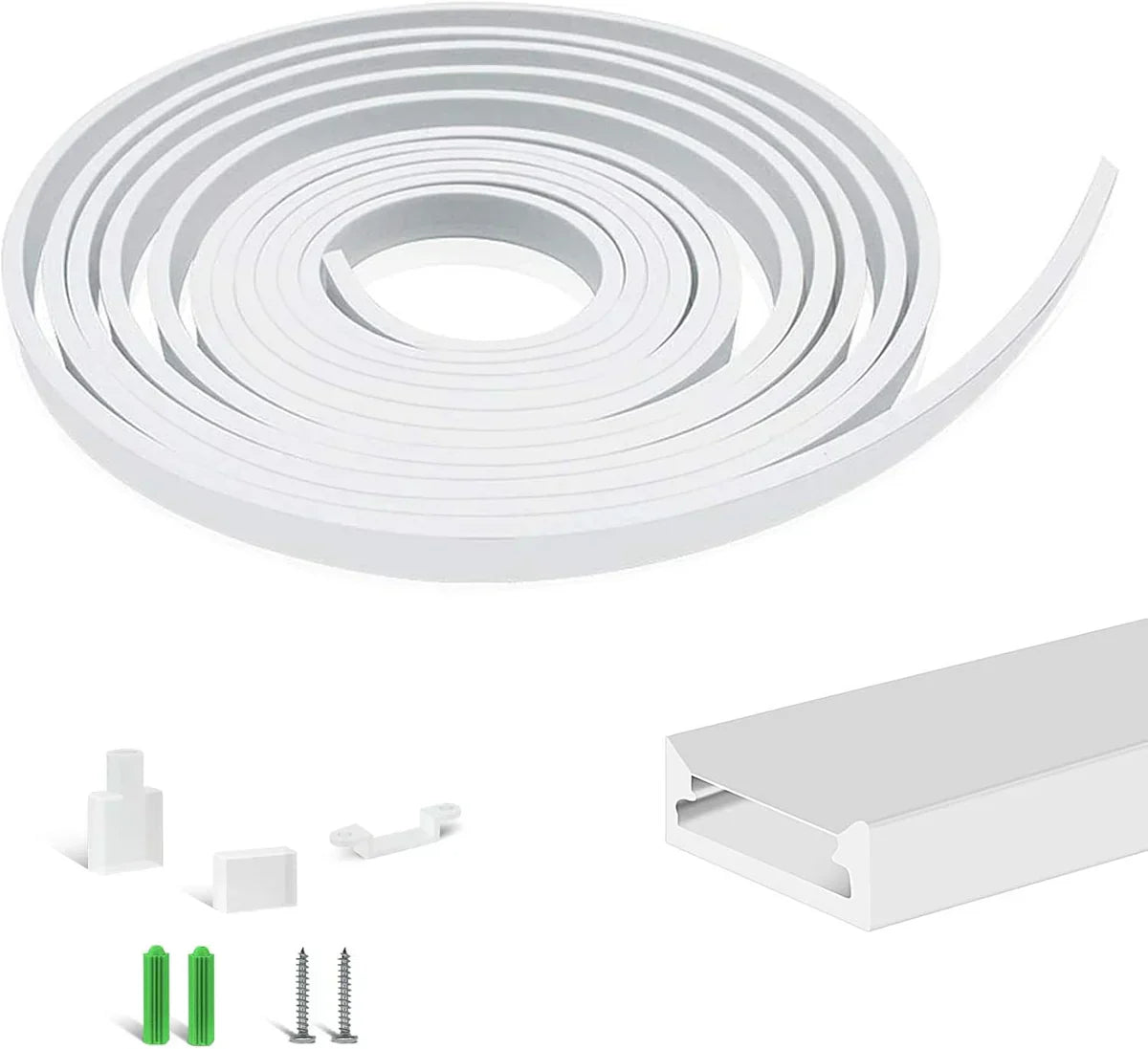In LED strip lighting applications—especially in architectural, decorative, and commercial environments—the silicone housing is far more than just an aesthetic or protective covering. The shape, cross-section, and structural design of the silicone tube play a critical role in determining how easily the product can be installed, how effectively it performs, and how long it lasts in real-world conditions.
A well-designed neon housing not only protects the LED strip from dust and moisture but also optimizes light diffusion, bending flexibility, and maintenance convenience.
1. Influence of Cross-Section Shapes on Flexibility, Support, and Mounting
The cross-section shape of a silicone LED housing directly affects its mechanical flexibility and installation method:
Round housings are highly flexible and ideal for curved, circular, or 3D installations. Their symmetrical geometry distributes stress evenly, making them less prone to cracking under frequent bending.
Square housings provide better structural rigidity and are suitable for linear, architectural edges or wall-mounted light lines. Their flat surfaces allow for easy attachment using clips or aluminum channels.
Flat (strip-like) housings are designed for narrow spaces or flush-mount applications. They provide uniform side or top illumination and are preferred in signage, display outlines, or furniture lighting.
When choosing a cross-section design, users should consider bending direction, light diffusion angle, and installation surface type, ensuring that the chosen shape supports the mechanical and optical needs of the project.
2. Structural Design: Brackets, Slots, and Fastening Mechanisms
An effective mounting system enhances both safety and ease of installation. Silicone LED housings typically integrate with one or more of the following systems:
-
Mounting brackets (clips): Offer quick installation and removal; suitable for both indoor and outdoor use.
-
Aluminum channels or slots: Provide additional heat dissipation and a clean, professional finish.
-
Press strips or snap-on fasteners: Secure the housing tightly in applications where vibration or environmental stress is expected, such as outdoor signage or automotive lighting.
The mechanical stability of the structure ensures that the LED strip maintains consistent alignment, preventing sagging or twisting that could affect brightness uniformity.
3. Designing for Easy Maintenance, Replacement, and Reassembly
A well-thought-out housing structure should not only protect but also simplify maintenance. Designers often employ:
-
Openable or slide-in slot designs to allow quick access for LED strip replacement.
-
Modular housing segments that can be individually removed and replaced.
-
Waterproof yet detachable end caps to preserve IP67 protection while enabling reassembly.
These designs significantly reduce maintenance downtime, especially for large-scale installations like LED façades, commercial signage, or retail lighting where replacing a full section would otherwise be labor-intensive.
4. Bending, Curvature, and Angle Design Principles
The bending and curvature design of a silicone housing determines how well it can adapt to architectural contours or artistic curves.
Key design guidelines include:
-
Minimum bending radius: Exceeding this limit may cause internal stress, damaging the LED strip or diffusing surface.
-
Consistent curve direction: Silicone housings are often optimized for side-bending or top-bending—select the correct type based on your installation layout.
-
Corner transitions: Use compatible 90° or flexible connectors to maintain uniform light and mechanical integrity at turns.
Proper bending design not only preserves light uniformity but also extends the product’s lifespan and mechanical durability.
5. Recommended Silicone Neon Housings from LEDLightsWorld
LEDLightsWorld offers a wide range of high-quality silicone neon housings, featuring IP67 waterproof protection and compatibility with various PCB widths.
These housings are designed for both indoor and outdoor LED projects, providing exceptional flexibility, durability, and optical performance.
| Model | Dimensions / PCB Width | Description | Product Link |
|---|---|---|---|
| S0410 Silicone LED Channel System | 4×10mm / 5mm PCB | Side-edge lighting, flexible, waterproof | View Product → |
| S0612 Silicone LED Channel System | 6×12mm / 8mm PCB | Ideal for decorative and signage lighting | View Product → |
| S1010 Silicone LED Channel System | 10×10mm / 6mm PCB | Compact, suitable for linear or curve outlines | View Product → |
| S1212 Silicone LED Channel System | 12×12mm / 8mm PCB | Balanced design, ideal for architectural lines | View Product → |
| S1420 Silicone LED Channel System | 14×20mm / 12mm PCB | Larger section for higher light output | View Product → |
| S13D Silicone LED Channel System | 13mm / 5mm PCB | Compact round design for side or top lighting | View Product → |
| S0817 Silicone LED Channel System | 8×17mm / 8mm PCB | Side-edge lighting with soft diffusion | View Product → |
Conclusion
Whether you are working on architectural outlines, retail signage, or interior accent lighting, choosing the right silicone housing shape and structure greatly enhances your project’s visual performance, safety, and long-term reliability.
A well-matched housing design not only simplifies installation and maintenance but also ensures consistent illumination and extended lifespan—making it a key component in any professional LED lighting solution.

